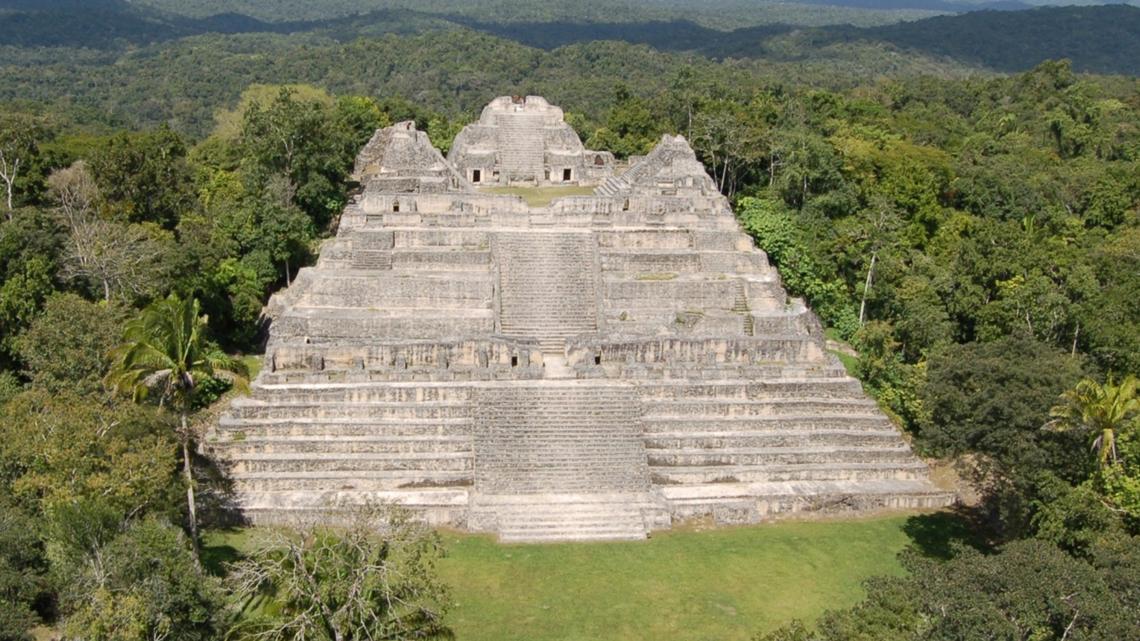After four decades of hard work, an archaeology couple made a significant discovery.
HOUSTON — University of Houston archaeologists have uncovered the tomb of Te K’ab Chaak, the first ruler of the ancient Maya city of Caracol in Belize, Central America.
The discovery represents the first identifiable ruler’s tomb found in over four decades of excavation at the largest Maya archaeological site in Belize.
The dynasty founded by Te K’ab Chaak endured for more than 460 years, with Caracol emerging as a dominant force in the southern Yucatán Peninsula between A.D. 560 and 680. The city was abandoned around A.D. 900.
Te K’ab Chaak, who ascended to the throne in A.D. 331 and founded Caracol’s royal dynasty, was buried at the base of a royal family shrine. His tomb contained elaborate grave goods, including 11 pottery vessels, carved bone tubes, jadeite jewelry, a mosaic jadeite mask, and Pacific spondylus shells. Archaeologists estimate he was of advanced age at death, standing approximately 5 feet 7 inches tall, with no remaining teeth.
Historic discovery after four decades of digging
The excavation was led by husband-and-wife archaeologists Arlen F. Chase and Diane Z. Chase, who have directed research at Caracol for more than 40 years. The fieldwork was conducted in collaboration with Belize’s Institute of Archaeology and supported by the Alphawood Foundation, the University of Houston, the Geraldine and Emory Ford Foundation, and the KHR Family Fund.
Several pottery vessels found in the tomb depict rare insights into Maya culture. One vessel shows a Maya ruler holding a spear and receiving offerings from deities. Another feature Ek Chuah, the Maya god of traders, is surrounded by gifts. Four vessels portray bound captives, while two are topped with modeled coatimundi heads, significant as the coatimundi, or tz’uutz’ in Maya, was later used in the names of subsequent Caracol rulers.


Evidence of Teotihuacan political order
The discovery sheds new light on early diplomatic and cultural connections between the Maya and Teotihuacan, the powerful central Mexican city located about 1,200 kilometers (745 miles) from Caracol. Te K’ab Chaak’s tomb is one of three major burials at the site dated to around A.D. 350, a period marked by increased contact between the regions.
“One question that has perplexed Maya archaeologists since the 1960s is whether a new political order was introduced to the Maya area by Mexicans from Teotihuacan,” said Diane Z. Chase, senior vice president for academic affairs and provost at the University of Houston. “The Caracol archaeological data suggest the situation was far more complex.”
A cremation burial discovered in 2010 contained central Mexican artifacts, including green obsidian blades from Pachuca and an atlatl projectile tip characteristic of Teotihuacan warriors. The cremation, placed in a residential plaza, reflected Teotihuacan rather than Maya burial customs, indicating that the individual may have been a Caracol royal who adopted central Mexican rituals.
A third burial, discovered in 2009, contained the remains of a woman along with pottery vessels, a spondylus bead necklace, and Pacific spondylus shells—all covered in hematite.
“Both central Mexico and the Maya area were clearly aware of each other’s ritual practices, as reflected in the Caracol cremation,” said Arlen F. Chase, professor and chair of comparative cultural studies at the University of Houston. “The connections between the two regions were undertaken by the highest levels of society, suggesting that early kings at various Maya cities—including Te K’ab Chaak—were engaged in formal diplomatic relationships with Teotihuacan.”


The search continues
Research at the site continues, including the reconstruction of the jadeite death mask and ancient DNA analysis of the skeletal remains.
The Chases will share detailed information on the tomb and other finds from Caracol at the Santa Fe Institute in August.
